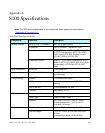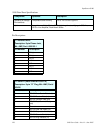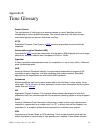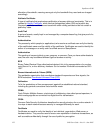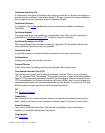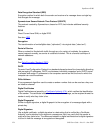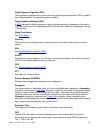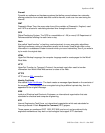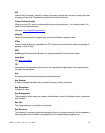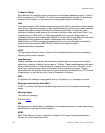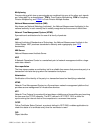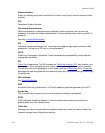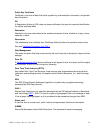
124 S100 User Guide – Rev. D – June 2005
SyncServer S100
Data Encryption Standard (DES)
Encryption method in which both the sender and receiver of a message share a single key
that decrypts the message.
Symmetricom Secure Network Time Protocol (SS/NTP)
The protocol created by Symmetricom, based on NTP, that includes additional security
features.
DCLS
Direct Current Level Shift, or digital IRIG.
See also: IRIG
Decryption
The transformation of unintelligible data (“ciphertext”) into original data (“clear text”).
Denial of Service
When a network is flooded with traffic through any of a variety of methods, the systems
cannot respond normally, so service is curtailed or denied. This is a favorite technique of
network saboteurs.
DES
See Data Encryption Standard (DES)
DHCP
Dynamic Host Configuration Protocol is a standards-based protocol for dynamically allocating
and managing IP addresses. DHCP runs between individual computers and a DHCP server
to allocate and assign IP addresses to the computers as well as limit the time for which the
computer can use the address.
Diffie-Hellman
A key-agreement algorithm used to create a random number that can be used as a key over
an insecure channel.
Digital Certificates
Digital Certificates are issued by a Certificate Authority (CA)
, which verifies the identification
of the sender. The certificate is attached to an electronic message, so the recipient knows the
sender is really who they claim to be.
Digital Fingerprint
Similar to digital signature, a digital fingerprint is the encryption of a message digest with a
private key.
Digital Signature
Like a digital certificate, a digital signature is a data string that is verified by a Certificate
Authority, and is attached to an electronic message so that it can verify that the sender is
really who they claim to be. The difference between a digital certificate and a digital signature
is found in how the message is encrypted and decrypted.






